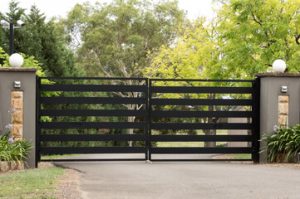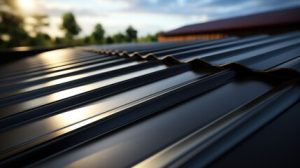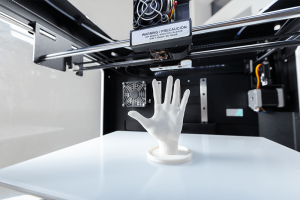Custom Metal Gates are no longer just for security purposes. They now reflect personal style and innovation. Designs have grown beyond basic bars and welds. Gates are now part of architectural storytelling.

The demand for customized entrances continues to rise. More homeowners want unique elements for curb appeal. Artists and fabricators now collaborate more closely. This results in one-of-a-kind gate expressions.
Technology has changed how custom gates are made. Advanced software helps sketch intricate layouts. Laser cutters shape metal with stunning precision. This raises both quality and speed in production.
Sustainability is entering the world of custom metal gates. Designers use recycled alloys in fabrication. Eco-conscious clients support this green direction. Metal artistry now includes environmental care.
Some custom gates incorporate solar features into their frames. Small panels power sensors or lights. This adds function without compromising beauty. The gate becomes a source of self-sustaining energy.
There’s growing interest in kinetic gate elements. Sections of metal now move or fold on command. Remote access merges with fluid mechanical design. The result feels like art in motion.
Perforated patterns are used to manage light and privacy. These cut-outs filter sun rays artistically. Shadows shift throughout the day. Visual rhythm becomes part of the gate’s charm.
Architectural gate framing has become more experimental. Asymmetrical outlines are becoming trendy. Traditional straight lines are replaced by curves and diagonals. This adds movement to static barriers.
Some gates now include sound-dampening technology. Noise from roads or neighbors is absorbed. These structures go beyond visuals and offer acoustic support. Privacy becomes both visual and auditory.
Weather-adaptive gates are gaining attention. Smart coatings adjust to sunlight and moisture. Their surface changes reflect temperature or rain. Maintenance becomes easier and more efficient.
Customization now includes interactive technology. Gates respond to voice commands or proximity. Lighting adjusts based on motion detection. A simple entry becomes a personalized experience.
Forged metal art is being revived with a twist. Modern blacksmiths blend old techniques with new forms. Handmade textures meet digital symmetry. The aesthetic contrast is powerful and unique.
Minimalist gate designs are evolving with finer detail. Thin slats and invisible welds create sleek forms. Openwork styles still offer full security. Lightness meets strength in well-balanced builds.
Foldable metal gates offer flexible access. They open partially or fully depending on need. Small driveways benefit from this adaptability. The gate adjusts to the moment with ease.
Color treatments are becoming bolder and more refined. Powder-coated finishes now include pearlescent effects. Matte textures create depth in subtle tones. Finishes protect and enhance the gate’s appeal.
Some projects include gates as part of living spaces. Rooftop gardens and patios extend to framed partitions. Metalwork defines zones without enclosing them completely. Openness remains while structure is added.
Etched storytelling is an emerging theme in custom work. Scenes are cut into panels or brushed into texture. These visual narratives reflect the owner’s personality. Gates become canvases for memories or values.
Integrated lighting is now sculptural, not just functional. LED strips follow patterns within the metal. When lit, the gate transforms at night. Beauty continues even after sunset.
Smart materials are being introduced for adaptability. Certain alloys remember shapes under pressure. If bent, they return to form. This allows the gate to self-correct against minor impacts.
Security has also evolved through customization. Hidden locks and flush edges deter tampering. Structural reinforcements are masked by elegant forms. Strength blends invisibly with style.
Floating installations give the illusion of weightlessness. Metal gates are suspended without visible support. This design uses tension and balance. Entryways seem to defy gravity itself.
Digital modeling improves client involvement. Clients walk through 3D renderings of their future gate. Adjustments happen before any cutting begins. The result aligns perfectly with their vision.
Architects now treat gates as part of flow design. Gate style reflects interior themes. Lines, colors, and textures echo across structures. Every part of the property speaks the same language.
Gates that support vertical landscaping are trending. Frames hold potted plants or climbing vines. Greenery weaves through metal patterns. It brings life to an otherwise rigid material.
Some metal gates include wind features for movement. Chimes or fins rotate in passing breezes. The gate becomes responsive to its environment. It participates in the world around it.
Antique metalwork is being reimagined for modern taste. Older gates are redesigned with geometric reinterpretations. What once looked heavy now feels contemporary. The past and present are forged together.
Portable metal gates serve temporary architectural needs. Pop-up events and seasonal zones use these smartly. Durable yet mobile, they offer protection and aesthetics. Once folded, they store compactly.
Texture now plays a bigger role than form alone. Brushed, hammered, or sanded finishes add tactile contrast. Touch becomes part of the gate experience. Users feel craftsmanship beyond what eyes see.
Custom fabrication has inspired smaller businesses to thrive. Independent workshops specialize in gate innovation. Each project is a new journey. Local makers rise with global creativity.
Cultural motifs are being reintroduced into gate work. Patterns rooted in tradition now mix with modern forms. This allows heritage to exist in urban design. History becomes visible and meaningful.
Transparent metals are entering the market in experimental form. Alloys allow filtered views without losing durability. It’s an alternative to glass and mesh. Security remains while openness is preserved.
Modular gate components are part of future-proof designs. Pieces can be replaced without removing the whole gate. This extends product lifespan significantly. Owners enjoy long-term cost savings.
Collaboration between homeowners and metal artists is increasing. Clients sketch basic ideas on paper. Artists interpret and elevate those drawings. The gate becomes a shared masterpiece.
Climate-aware designs now factor sun angles and airflow. Metal screens shift based on seasonal heat. Ventilation supports passive cooling. Gates quietly aid in energy conservation.
Lighting features now follow motion in a wave sequence. A person’s movement activates gradual brightness. This dynamic welcome replaces static illumination. Entry becomes an engaging experience.
Industrial metal offcuts are being repurposed artistically. What was waste becomes sculptural framework. No two gates look alike in this method. Sustainability meets originality without compromise.
Underfoot gate tracks are now redesigned for safety. Treads avoid catching heels or bike tires. These details improve everyday experience. Accessibility is part of good gate design.
Hidden hinges and seamless joints are more common. These features reduce visual noise. The result is a cleaner and more polished aesthetic. Simplicity becomes the luxury in metal gates.
Rusted metal finishes are now a deliberate style. Controlled oxidation creates rich texture and color. Weathered gates add age and character. They blend well with earthy landscapes.
Sound-based gate alerts replace visual alarms. These use tones instead of harsh sirens. Guests hear soft cues when gates open. Security stays subtle and respectful.
Some gate designs use magnetic force instead of latches. This innovation avoids mechanical locks entirely. Strong yet invisible, it offers smooth closure. It’s a silent revolution in gate security.
Education in metal design is gaining popularity. Students now study art, mechanics, and architecture together. The next generation of fabricators is more interdisciplinary. Gates will continue to reflect this blend.
Crowdsourced gate ideas are starting to shape the market. Online users suggest and vote on patterns. Designers refine and fabricate based on feedback. Creativity becomes a shared platform.
Integration with automation systems is now seamless. Gates sync with mobile apps and smart home hubs. Timing, alerts, and access logs are tracked easily. The future of entry management is already here.
Each custom metal gate now tells a unique story. It represents lifestyle, identity, and creativity. Beyond function, it becomes part of one’s life. Innovation and individuality meet at the threshold.


